| Irish Forums Message Discussion :: The British Crown monarchy built on human slave trade |
   | Irish Forums :: The Irish Message
Forums About Ireland and the Irish Community, For the Irish home and Abroad. Forums include- Irish Music, Irish History, The Irish Diaspora, Irish Culture, Irish Sports, Astrology, Mystic, Irish Ancestry, Genealogy, Irish Travel, Irish Reunited and Craic
|  
|
The British Crown monarchy built on human slave trade


|
|
|
| Irish
Author |
The British Crown monarchy built on human slave trade Sceala Irish Craic Forum Irish Message |
|
Hibernian lass
Sceala Philosopher
|
| Sceala Irish Craic Forum Discussion:
The British Crown monarchy built on human slave trade
|
|
|
Good old post from these Irish forums, worth talking about again in light of the history now coming to more general awareness.
The connections between the British royal family and slavery.
The Duke of York's slave business concern branded the initials "DY" on the left buttock or breast of each of the 3000 slaves they shipped to what were called the "sugar islands" in the Caribbean.
Later, Charles II was a shareholder in the Royal African Company, which made vast profits from the slave trade.
reference
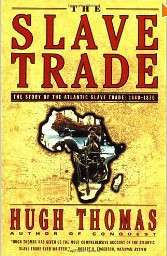 The SLAVE TRADE: THE STORY OF THE ATLANTIC SLAVE TRADE: 1440 - 1870 The SLAVE TRADE: THE STORY OF THE ATLANTIC SLAVE TRADE: 1440 - 1870
award-winning British historian Hugh Thomas
In the 1680s it was transporting about 5,000 slaves per year. Many were branded with the letters 'DY', after its chief, the Duke of York, who succeeded his brother on the throne in 1685, becoming James II. Other slaves were branded with the company's initials, RAC, on their chests.
Between 1672 and 1689 it transported around 90,000-100,000 slaves. Its profits made a major contribution to the increase in the financial power of those who controlled London.
The British royal family and slavery
In 1632, King Charles I first granted a licence to transport slaves from Guinea. In 1651, a new Guinea Company in London was founded. The term for coinage the Guinea comes from this historic connection.
After the revolution of 1688 the trade was thrown open, and in 1713 an English company obtained the privilege of supplying the Spanish colonies in America, South and Central, for thirty years, stipulating to deliver 144,000 negro slaves within that period. One quarter of the stock of the company was taken by King Philip V. of Spain, and Queen Anne of England reserved for herself the other quarter. So the two monarchs became great slave-dealers.
The British Crown controlled the slave trade.
Britain never never shall be slaves.
If we set aside the nationalist simplicity, the historical inaccuracy (several centuries of effective Roman enslavement of Britain, the Norman invasion and conquer, the later Hunoverian rule by scheme, etc..) we have left somewhat of a boast, a Freudian boast.
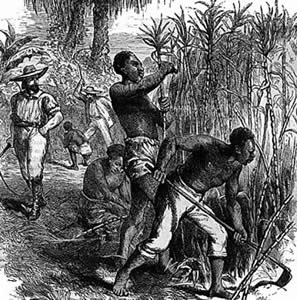
The British Crown, the English monarchy and their sanctioned elite peer group, of course built most of their personal fortunes via slavery and other crimes against humanity.
The British Crown made much of their vast personal wealth from the human slave trade. The transportation of people, especially Irish and African slaves to their Colonies in the new world.
The British Queen or Crown monarchy has never apologized for their evil or paid a cent in reparations.
On the contrary, instead of showing any sign of acknowledgement and remorse for their intrinsic role in the human slave trade, the British Crown monarchy and supportive Westminster Politicians, have no shame, they even perversely try and present themselves, Britain as the key to emancipation of Human slaves.
That is a selective account, a romantic short story. In historical fact the Crown continued to make wealth from their connections to the trade in the effective slavery and purposeful impoverishment of humans, to at least the 20th C.
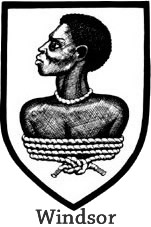 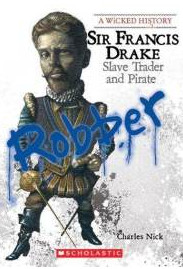
The British like to present the Royal navy as a sort of worlds sea police for humanity, the whole story of the history of the Royal Navy is however very different to that simplistic British propaganda. The Royal navy was used for centuries to enforce the slave trade, they were the main protectors of the slave traders and ships.
A key figure in the slave trade was a resident of Deptford and pirate, Sir John Hawkins. The Church of St. Nicholas contains a statue of William Hawkins, his brother, which was erected by Hawkins, then Treasurer of the Royal Navy in 1589. Described as "the English father of the slave trade", he lived in the Treasurers House at Deptford Dockyard and made his first slaving trip from England in 1562.(
In the The Open Veins of Latin America, Eduardo Galerno describes how Elizabeth 1 became a business partner of Captain John Hawkins. His first slave expedition in 1562 was made with a fleet of three ships and 100 men. He smuggled 300 slaves out of Portuguese Guinea "partly by the sworde, and partly by other meanes".
According to James Walvin writing in Black Ivory, Hawkins sold the slaves in Hispaniola, and filled his ships with "hides, ginger, sugars, and some quantities of pearles". A year after leaving England, Hawkins returned to England "with properous successe and much gaine to himself and the aforesayde adventurers".
When Hawkins told her that in exchange for the slaves, he had a cargo of sugar, ginger, hides and pearls, "she forgave the pirate, and became his business partner". She supported him by loaning him for a second expedition, The Jesus of Lubeck, a 700 ton vessel purchased for Henry VIII for the Royal Navy.
Anim-Addo notes from the official Navy records how the slave trade was to "enrich England for centuries to come . . . and correspondingly depopulate and impoverish Africa":
The man of the fleet (Royal Navy) were kept busy going ashore every day to capture the Negroes, burning and spoiling their towns, and many were taken . . . by the 21st December, the raiding parties had taken all the Negroes they could find and had also carried on board as much fruit . . .
As business increased, and he made himself rich, Hawkins reputation soared within slaving circles. On his third slaving expedition in 1567, for which Elizabeth's I's investment increased to two ships, he was accompanied by Sir Francis Drake. On this particular journey they "had obtained between four and five hundred Negroes, wherewith we thought it somewhat reasonable to seek the coast of the West Indies".
'The slave trade was seen as the nursery of seamen’
Queen Elizabeth I ordered Sir John Hawkins in 1652 to begin the slave trade and, joined by his cousin, Sir Francis Drake, they began bringing Negroes from Africa to the New World. The British Crown then spent years forcing their colonies in North America to accept slaves. For example, the British Crown overruled the Georgia Colony's strong objection to the Triangle Trade slave trade, which from 1735 to 1751 4 had banned slavery as a moral evil.
On Monday, December 10th, 1770, while in council King George III issued under his own hand the following command to the Governor of Virginia:
"… upon pain of the highest displeasure, to assent to no law by which the importation of slaves should be in any respect prohibited or obstructed." — King George III
The British Royal Navy supposed heroes were in reality all human slave traders for centuries.
So called Knights and Sir's, such as Hawkins and Frobisher, Francis Drake and Walter Raleigh, were human slavers. These were brutes, traffickers in humans. These were evil mass murderers of women and children, they were not brave heroic or remotely admirable.
Sir Francis Drake: Slave Trader and Pirate
'We pray you buy as many lusty negers as she well can carry, and so despatch her to the Barbados'.
Members of the British royal family were the first members of a European royal family to go to West Africa - and purpose of the visit was slavery. In 1660, after the Restoration of Charles II, a new slave-trading company was set up in London called the Royal Adventurers into Africa. The unemployed Duke of York, the brother of King Charles II was the President of the new company which was given a monopoly of the English African trade for 1,000 years. Princess Henrietta ('Minette'), the King's sister, also had a share
Investors, who were known as "The Royal Adventurers", each of invested £250 in the enterprise, and included most of the important politicians of the time: for example, the King's friend the Duke of Buckingham, Lord Craven, Lord Ashley, the Duke of Albermarle (General Monck), Lord Arlington, Lord Berkeley, Lord Crofts, Henry Jermyn (a prominent Catholic), and Lord Sandwich, the admiral who had brought back King Charles II from exile in Holland. The King's brother, the unemployed Duke of York, became President. In total, there were four members of the royal family, two dukes, a marquess, five earls, four barons, and seven knights.
When a new charter was issued for the company of Adventurers in January 1663, shareholders now included King Charles II, the Queen Mother, Henrietta Maria, and the Duke of York (who invested £2,000). Other included new Queen, Catherine of Braganza (whose dowry of £330,000 was partly financed slave traders), and Samuel Pepys. The, so-called "philosopher of liberty", John Locke was another subscriber. As noted by Thomas:
"The profits which could be made from trading slaves had by then been appreciated in England."
Thus, as Thomas observes, the commitment by the royal family to the African slave trade was strong. Few people know the origin of the money once used in England called "guineas" - but it will come as no surprise to know that the coin was named after a country in West Africa where the British were heavily - and profitably - involved in the slave trade. In 1663, it was agreed that some of the gold brought back from the Gold Coast region (present day Ghana to Guinea) should be turned by the Royal Mint into coins with an elephant on one side. Because of there connection to the slave trade, Thomas points out, they "were popularly called 'guineas' from the beginning". The coin was made until 1813, and the unit of currency continued in use till the abolition of the old shilling in 1967.
In 1665 the company of Adventurers estimated its annual return from gold as £200,000, from slaves as £100,000, and from ivory, wax, hides, woods, grain (pepper) as another £100,000. It had had assured the King that:
"The very being of the plantations depends upon the supply of negro servants for their works" Hugh Thomas in The Slave Trade: The History of the Atlantic Slave Trade 1440-1870 (Picador, London, UK, 1997)
The Royal Adventurers company was wound up in 1672 and in its place, the Royal African Company (RAC) founded. The Governor and largest shareholder, was James, Duke of York. The directors also included four proprietors of plantations in Carolina (Lord Shaftesbury, Lord Craven, Sir George Carteret, Commissioner for Trade and Plantations; and Sir John Colleton, a landowner in Barbados as well as Carolina) - as well as Lord Berkeley, "the first peer . . . to collect directorships". The shareholders also included over the years, fifteen of the lord mayors of London, twenty-five sheriffs of London, and again, John Locke. Between 1672 and 1689, the company exported just under 90,000 slaves into the West Indies. A further 75,000 slaves were sent to British North America, and sold onto plantations in the 13 colonies, between 1673 and 1725, according to Thomas.
Thus it is clear that much of London's early wealth was generated by the Slave trade, with the involvement of many prominent people at the time - from John Locke to Samuel Pepys, most of the merchants in the City of London seemed to have a hand in it, along with the involvement of the British royal family from the 16th century to the 18th century.
Australia, the Crown involvement in the human slave trade continued in cynical disguise.
The Crown planted countless poor and innocent Irish and others in their colonies, the Crown cynically used offenses against their own Crown laws as a excuse to populate and thereby steal from Australia and where ever else they could make profits around the world.
India
 The British have occupied our dear land. Our commerce and industry has been ruined. They have plundered and looted the wealth of Hindustan and brought famine and plague. More than 90 million Hindustanis do not even have one square meal a day. Thirty million have died due to famine and plague. They are sending all our produce and grains to England. Brave Hindis! Awaken from your sleep. What is our duty at this time? Our duty at this time is to prepare an army to fight against British rule in India which is the root of all our problems. This is not the time for talk. This is the time for war. How long will you wait? How long will the world keep calling you slaves? The British have occupied our dear land. Our commerce and industry has been ruined. They have plundered and looted the wealth of Hindustan and brought famine and plague. More than 90 million Hindustanis do not even have one square meal a day. Thirty million have died due to famine and plague. They are sending all our produce and grains to England. Brave Hindis! Awaken from your sleep. What is our duty at this time? Our duty at this time is to prepare an army to fight against British rule in India which is the root of all our problems. This is not the time for talk. This is the time for war. How long will you wait? How long will the world keep calling you slaves?

Ghadar Party Statement 1914
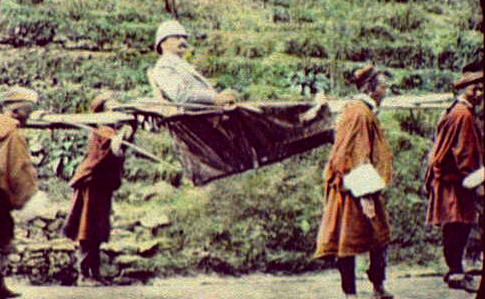
To put the shameless and disgraceful behavior of the English Crown today in some logical context, their current behavior and attitude would be like the successors children of a successful Third Reich, eventually preaching it was now time to tell the world that the Jews are human and deserving of freedom.
The British Crown monarchy are extreme hypocrites, they made their money from every crime, but especially the human slave trade and drug trafficking in their Opium wars. They only stopped actively controlling, promoting and blessing the slave trade when the advent of the industrial age and modern capitalism made slavery somewhat expensive.
The effects of the British Crown monarchy terrorism around the world were devastating, they encouraged ignorance and idolatry of themselves upon native peoples,. They did so for gain, personal profits.
Noble & Gracious Queens?
The British Crown monarchy was the H.Q. control behind the Human Slave trade
The British Crown monarchy were slave traders.
The real history of the supposed Royals of England.
 Britain fully entered the slave trade in 1660 when Charles II helped found a new company called “Royal Adventures into Africa”. The company was granted a monopoly on the British slave trade for 1000 years, and its members included the royal family and the aristocracy. Two years after its foundation the company had made a profit of £1m. The company wound up in 1672, but after minor changes in staff, shareholders and its charter, was reformed as the Royal African Company, and once again received Royal Protection. The King’s warrant stated: Britain fully entered the slave trade in 1660 when Charles II helped found a new company called “Royal Adventures into Africa”. The company was granted a monopoly on the British slave trade for 1000 years, and its members included the royal family and the aristocracy. Two years after its foundation the company had made a profit of £1m. The company wound up in 1672, but after minor changes in staff, shareholders and its charter, was reformed as the Royal African Company, and once again received Royal Protection. The King’s warrant stated:
“We hereby for us, our heirs and successors grant unto the same Royal African Company of England…that it shall be and may be lawful to….set to sea such as many ships, pinnaces, and barks as shall be thought fitting….for the buying, selling, bartering and exchanging of, for or with any gold, silver, negroes, slaves, goods wares and manufactures….

In colonies such as Barbados, Jamaica and Saint-Domingue (modern day Haiti) outstanding profits were made on the backs of the enslaved African labour force.
The British Royal navy protected slave ships
It is estimated that the Crown profited from around 4 million enslaved Africans, who were traded mainly to the Americas in British ships. Profits made on these voyages were often very large.
For instance, in the seventeenth century, the Royal Africa Company could buy an enslaved African with trade goods worth £3 and have that person sold for £20 in the Americas. The Royal Africa Company was able to make an average profit of 38% per voyage in the 1680s.
Although average profits on successful slave voyages from Britain in the late eighteenth century were less – at around 10% – this was still a big profit. The love of sugar that developed in Britain and other European populations meant the demand for sugar could only be met by the expansion of the slave trade to keep the plantations busy.
Many slaves died during the journey from Africa to the new world, so British Crown slavers packed as many slaves as possible into the holds of their ships to compensate for those that would die. There was no sanitation on board the ships.
The slaves were so tightly packed together that they could not turn, and they were given barely enough food, drink or air to keep them alive. Disease spread rapidly through the slaves and the dead often remained alongside the living for days. It has been estimated that 10% of slaves died on each crossing, and as many as thirty percent on a bad voyage.
This horrific trade saw between seven million and ten million (although no accurate records were kept) Africans shipped across the Atlantic to colonies in the Americas. It was commonplace for a slaveship to lose a quarter of her cargo before reaching port (doing the mathematics means around two million Africans died on English slave-ships), the corpses would have been thrown overboard.
Bristol along with Liverpool was a main centre with more than two thousand slaving ships being fitted out in Bristol during its peak. Much of Bristol's wealth was tied in to the trading of slaves which provided the money to purchase goods to bring back into Britain such as sugar, coffee and tobacco.
Between 1697 and 1807, 2,108 known ships left Bristol to make the trip to Africa and onwards across the Atlantic with slaves. Profits from the slave trade ranged from 50% to 100% during the early 18th century. Bristol was already a comparatively wealthy city prior to this trade; as one of the three points of the slave triangle (the others being Africa and the West Indies), the city prospered. This triangle was called the Triangular Trade.
Even after supposed emancipation in Britain.
British merchants continued to invest in the slave trade through Spanish, Portuguese and American traders. The slave trade was still legal in those countries, and British merchants supplied trade goods and banking capital to foreign slave traders.
The slave trade worked on the triangular model, making a profit on each stage of the voyage. Ships left Bristol with a cargo of cotton, brass, copper, gin or muskets, which were bartered for slaves with the West African traders. The ships then embarked on the Middle Passage to the West Indies or America where the surviving slaves were sold at a profit, often to plantation owners originally from Bristol.
Naturally, the Africans fought the traders sent to capture them and many committed suicide when they were captured; thousands more were killed in mutinies or died in the dreadful conditions at sea. Perhaps most shocking of all, there is evidence of Bristol captains drowning their entire cargo of diseased slaves so that the loss could be claimed on the owners’ insurance as legal jettison’.
The Bristol slave ship the Jason. On her one recorded slaving voyage in 1748, she carried 70 crew to look after the 600 slaves. Only 340 slaves survived the voyage to Jamaica, in the Caribbean. This could have been due to a number of reasons. Lives could have been lost due to sickness, slaves committing suicide, or poor treatment by the crew.
Slaving voyages were considered to be very high risk, however the possible profits to be gained were also high and many were willing to take the chance.
The last leg of the triangular trade was the return back to Bristol, this is known as the ‘return passage’ . The slave ships would have left Bristol many months before for West Africa. Once there they traded for enslaved Africans, whom they then took across the Atlantic Ocean to the European-owned plantations in America and the Caribbean. Once they had sold their cargo of slaves, the ships crossed the Atlantic Ocean again on their journey back to Bristol. This time the ships’ holds were filled, not with human beings, but with barrels of sugar, rum or tobacco.
This was a crime as great as the Holocaust.
But the British Crown have no shame or guilt, they just have the benefits of the profits of such extremes of evil.
The Crown got a percentage of tax take from every slave trader.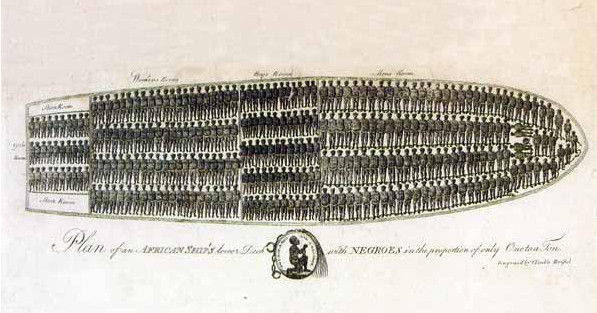
Thomas Jefferson to write as follows in his first draft of the Declaration of Independence:
"He has waged cruel war against human nature itself, violating its most sacred rights of life and liberty in the persons of a distant people who never offended him, capturing and carrying them into slavery in another hemisphere, or to incur a miserable death in their transportation thither. This piratical warfare, the opprobrium of infidel powers, is the warfare of the 'Christian' King of grate britain. Determined to keep open a market where men should be bought and sold, he has prostituted his negative [his right to veto laws] for suppressing every legislative attempt to prohibit or to restrain this execrable commerce."
many famous institutions in London were built on the profits of the slave trade, according to research carried out by Dr Nick Merriman of the Museum of London. (These included Barclays Bank, founded by Alexander and David Barclay, who were among 84 Quaker slave traders operating in the West Indies according to the records of the Society of Friends. One bank closely connected with slavery and South East London was Barings Bank. It's founder, Sir Francis Baring earned nearly £7 million from a business of dealing in slaves that went back 70 years. Baring Road in South East London is named after him. He was said to have his first money trading in slaves when he was just 16, indicating his family's immense wealth and business connections with the West Indies. Thus, it is an outrage that this road (in the London Borough of Lewisham), has not been renamed.
The founding collection of pictures at the National Gallery in London, was given by John Julius Angerstein. He had built up his art collection with the money made from the slave trade, and his activities as one of Lloyd's underwriters insuring the slavers. According to one historian, the Bank of England should well have been called the Bank of the West Indies, because of it's involvement in slavery. Humphrey Morice, the Bank's governor between 1716 and 1729, owned six slave ships. Sir Richard Neave, a director for 48 years, was chairman of the Society of West Indian Merchants. Slaves were sold on the London Royal Exchange and "other places of public resort" - many of them children.
The British Crown monarchy built on human slave trade
The British Crown monarchy controlled the slave trade.
|
|
|
|
|
|
|
|
|
|

















